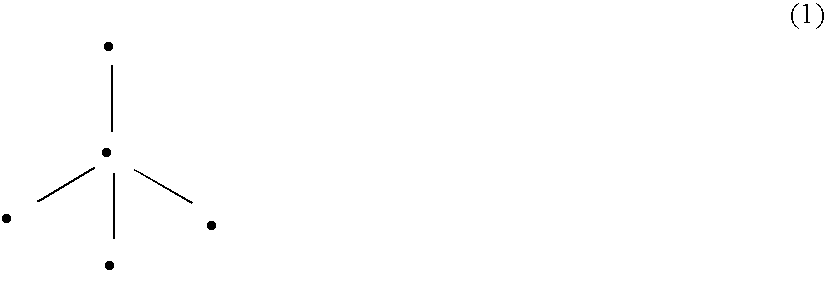Aggregates with increased deformability, comprising at least three amphipats, for improved transport through semi-permeable barriers and for the non-invasive drug application in vivo, especially through the skin
a technology of aggregates and amphipats, which is applied in the direction of pharmaceutical delivery mechanisms, organic active ingredients, drug compositions, etc., can solve the problems of preventing adequate absorption of active molecules, limiting the administration of active ingredients, and not solving the problem of active ingredient transport through skin or mucous barrier to general satisfaction, etc., to achieve the effect of lowering the activation energy for transbarrier transpor
- Summary
- Abstract
- Description
- Claims
- Application Information
AI Technical Summary
Benefits of technology
Problems solved by technology
Method used
Image
Examples
examples 1-120
[0198]
1 Composition: 37.74-84.5 mg Phosphatidylcholine from soy-bean (SPO, .about.85% purity, MFS) introduced as an ethanolic solution SPC / EtOH = 1 / 1 V / V and containing approx. 10% charged phospholipid (presumably anionic phosphatidylglycerol) 187-34.9 mg Polysorbate (Tween 80, pharmaceutical grade; MDS.sub.1) 5.6-20 rel. mol % Sodium dodecylsulphate (SDS, p.a.; MDS.sub.2) replacing phospholipid to the given amount add 1 ml Isotonic phosphate buffer (pH = 7.2)
[0199] Objective: to test the synergism between membrane destabilising, and thus aggregate adaptability increasing, activity of two different surfactants, used in a combination with a lipid, as the basic membrane forming system component.
[0200] Suspension preparation. To prepare a series with changing lipid / surfactant ratio in the range 1 / 1 to 9 / 1, the necessary amounts of phospholipid and surfactant are pipetted into buffer to yield 10% lipid suspensions. These are first stirred at room temperature for 5 days and then pre-filt...
examples 121-129
[0205]
2 Composition: 14.2 mg Polysorbate (Tween 80) 85.8 mg Phosphatidylcholine from soy-bean (SPC), as with examples 1-120 0-17.5 rel. mol % Sodium dodecylsulphate (SDS), relative to SPC and replacing phospholipid to the given amount add 1 ml Isotonic phosphate buffer (pH = 7.2)
[0206] Objective: as with examples 1-120, to test the synergism of different surfactant action on extended surface aggregate properties.
[0207] Suspension preparation. The method used to prepare vesicle suspension was the same as in examples 1-120. The only notable difference between both test series was the somewhat greater average diameter and polydispersity of the vesicles used in examples 121-129.
[0208] Transport ability (pore penetration capability and adaptability) of aggregate suspension. To characterise the resistance of semi-permeable barrier to suspension flux (=transbarrier flux), the same method as in examples 1-120 was used. The resistance was measured as a function of relative SDS concentration ...
examples 130-131
[0209]
4 Composition: [ 52.1 mg Phosphatidylcholine from soy-bean (SPC), actual amount = 52.2 mg - Na Chol amount in mg 45.2 mg Polysorbate (Tween 80) 5, 10, 15 mol % Sodium cholate = Na Chol (relative to SPC in the suspension) add 1 ml Isotonic phosphate buffer (pH = 7.2)
[0210] Objective: as with examples 1-120, but using a different charged surfactant (cholate instead of SDS).
[0211] Suspension preparation. The starting suspension was prepared as in previous examples. However, to make vesicles in the test formulation more uniform before actual measurements, the starting suspension was pre-filtered through 80 nm pore filters. This yielded vesicles with approx. 120 nm diameter, as determined with the dynamic light scattering using ALV 5000 correlator and a personal computer.
[0212] Vesicle transport ability (pore penetration capability / adaptability-). The actual transport test was done with relatively narrow pore (30 nm) filters, using different pressures applied on the filter to chara...
PUM
| Property | Measurement | Unit |
|---|---|---|
| average radius | aaaaa | aaaaa |
| average radius | aaaaa | aaaaa |
| average radius | aaaaa | aaaaa |
Abstract
Description
Claims
Application Information
 Login to View More
Login to View More - R&D
- Intellectual Property
- Life Sciences
- Materials
- Tech Scout
- Unparalleled Data Quality
- Higher Quality Content
- 60% Fewer Hallucinations
Browse by: Latest US Patents, China's latest patents, Technical Efficacy Thesaurus, Application Domain, Technology Topic, Popular Technical Reports.
© 2025 PatSnap. All rights reserved.Legal|Privacy policy|Modern Slavery Act Transparency Statement|Sitemap|About US| Contact US: help@patsnap.com



